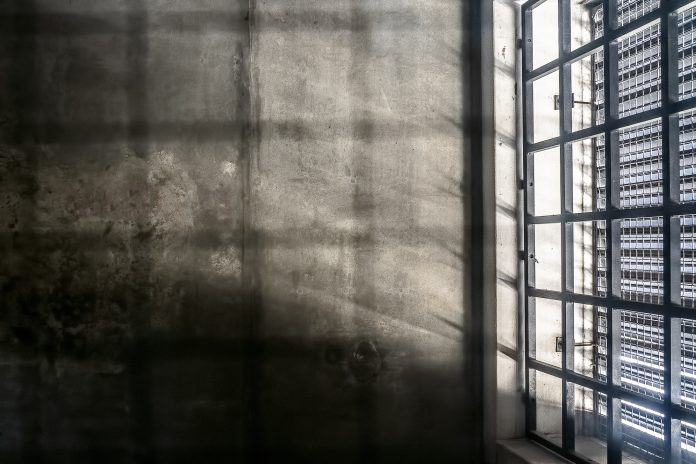IPCA Worldwide President David Buick shares the prison chaplain’s perspective on changes after the COVID-19 pandemic
The prison system is perhaps one of the strongest bastions of resistance to the digital world. While electronic surveillance tags have, in theory, made it possible to keep people in a virtual prison bereft of actual walls and bars, overall, we still seem to want to keep people physically locked up and, in doing so, restrict their access to the digital tools most of us take for granted in everyday life.
Nevertheless, prisons did not escape the massive shift to cyberspace brought about by the COVID-19 pandemic. For society at large, this led to the widespread discovery of working from home and Zoom meetings. Within prisons worldwide, COVID-19 led to a significant and often enduring increase in inmates’ access to digital technology for various uses.
COVID’s digital legacy in prisons
In the later stages of the pandemic, I visited a prison in the UK. I was told by the governor of inmates’ near-unanimous enthusiasm for court appearances via video link, which was used far more due to COVID since this meant much less time spent on remand.
During a recent visit to a prison in Thailand, I noticed rooms still set aside for video calls to families. Members of the International Prison Chaplains Association in several countries (including the U.S., Ireland, and the Philippines) (1) reported that COVID-19 allowed them to provide chaplaincy services and content via various forms of digital technology for the first time.
The pandemic may be officially over, but for better or worse, many changes it brought about in communication habits have endured. As a social microcosm, prison has amplified these.
What can we learn from COVID’s digital legacy in prisons? In the best cases, inmates now benefit from more access to digital tools alongside resumed in-person contact with those prevented from visiting for a time (including chaplains). In other instances, however, virtual solutions have tended to replace direct contact. Often seen as more efficient, they have the added advantage (to security-focused eyes) of fewer outsiders being in contact with inmates, but they can come at a high human cost.
Court appearances by video
The rise in court appearances by video during COVID-19 is a case in point. These seem to have become permanent in many places, not least because they also do away with the need to transport prisoners to and from court and the related costs and logistics challenges.
From this perspective, the fact that inmates appear before magistrates without leaving their prison environment is an advantage, but it also has huge drawbacks in human terms. Many prisoners don’t really adjust their mindset to the serious context of legal proceedings. Joining by video means their thoughts and behaviour patterns are full of the everyday challenges of prison life rather than their case and the courtroom.
To make matters worse, their lawyer is in the same room as the magistrate (or on a video link themselves) instead of being physically present at their side. As anyone who has ever taken part in an online meeting knows, there is little opportunity for brief asides; in a court hearing, the potential consequences are enormous and heighten the power imbalance between the defendant and the system – including their own legal counsel. If digitalisation erodes a defendant’s right to effective legal representation, ultimately, it will damage the justice system and lead to poorer outcomes for all.
Face-to-face interaction for prison chaplaincy
Prison chaplains tend to think about this kind of thing because face-to-face interaction is at the heart of what they do. The Christian faith at the origins of chaplaincy itself holds to the doctrine of the Incarnation: the belief that God himself became a flesh-and-blood human being.
As a result, chaplains attach high importance to proximity in relationships; how they operate is the polar opposite of court appearances by Zoom. With no agenda other than simply being there, chaplains literally sit alongside prisoners, allowing them to step back from their circumstances and grasp a broader perspective, sometimes accompanied by a faith journey. All of this opens up opportunities for individual change and rehabilitation.
That doesn’t mean people of faith are modern-day Luddites. ‘Online Church? First Steps Towards Virtual Incarnation’ (2) is just one theological investigation of the implications of digitalisation, mainly based on an early online church experience called Church of Fools in which I played a part.
In a world in which Zoom and Teams are now fixtures, the message from chaplains is not a call to reject modern-day technology outright but a plea amid digitalisation for appropriate consideration of the embodied, human element that is the basic building block of community, whether inside prison or outside.
References
1. https://www.vaticannews.va/en/world/news/2021-03/the-prison-chaplain-inthe-
covid-era.html
2. https://grovebooks.co.uk/product/p-112-online-church-first-steps-towardsvirtual-
incarnation-2007/
Contributor Details
Editor's Recommended Articles
-
Must Read >> Prison chaplaincy, reclaim space for the divine













